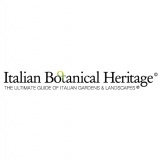
The Quirinale Palace stands on the homonymous hill of Rome. It is the official residence of the President of the Italian Republic and one of the symbols of the Italian State. The Quirinale surrounds a garden of about 4 hectares, famous for its elevated position. The romantic garden of the second half of the eighteenth century, with the elegant Coffee House built as a reception room, is added to the seventeenth-century formal garden.
The first design and arrangement of the garden is due to Cardinal Ippolito d'Este in 1550. The garden was articulated in avenues, pavilions and flowerbeds accessed through an entrance boulevard parallel to Pia street. From this avenue, a trident route led to a central pavilion with a nymphaeum ornamented with ancient statues and another wooden pavilion and foliage. A staircase allowed to reach the "lower garden" that housed a nymphaeum with statues of Apollo and the Muses and the "Big Fountain", transformed at the end of the sixteenth century in the Fountain of the Organo, known for the musical installations operated by the fall of the water and the richness of decorative equipment.
Between 1831 and 1846 a reorganization of the trees was carried out. Significant was the creation of a bush labyrinth (Buxus sempervirens) with an obelisk in the center and the arrangement of an elegant fountain with a marble and circular bathtub.
At the Savudian age, the Caserta Fountain was built, including a sculptural group of the park of the Reggia of Caserta, with three female figures sitting on a rock in the center of a circular tub.
Entering the Palace from the Quirinale Street, you are welcomed by the Palm Tree Avenue, alongside twelve geometric flower beds that host a rich collection of tree species. The protagonists are Chamaerops, Canary palms (Phoenix canariensis), Senegal palm (Phoenix reclined) and Date palm (Phoenix dactylifera), Butie (Butia capitata), Mexican palms (Washingtonia robusta) and Californian palms (Washingtonia filifera), Cicas (Cycas revoluta) and a rare Trithrinax countryside from Brazil.
A tangle of paths bordered by mixed hedges of boxwood, laurel (Laurus nobilis) and leccio (Quercus ilex) draw the contours of the "Italian" garden.
The sundial of Urban VIII, the unique solar clock created by Baroque architect Francesco Borromini, is placed in a large flowerbed where roaring roses show the verticality of the trees. Next to the palms we can find some domestic pines (Pinus pinea), a large exemplary of camellia (Camelia spp.), a Japanese magnolia (Magnolia x soulangeana), an aucarist (Araucaria bildwillii) and two magnolias (Magnolia grandiflora).



